Howard Building Science Uses Structural Insulation Panel Systems to Optimize Single-Family Production Home
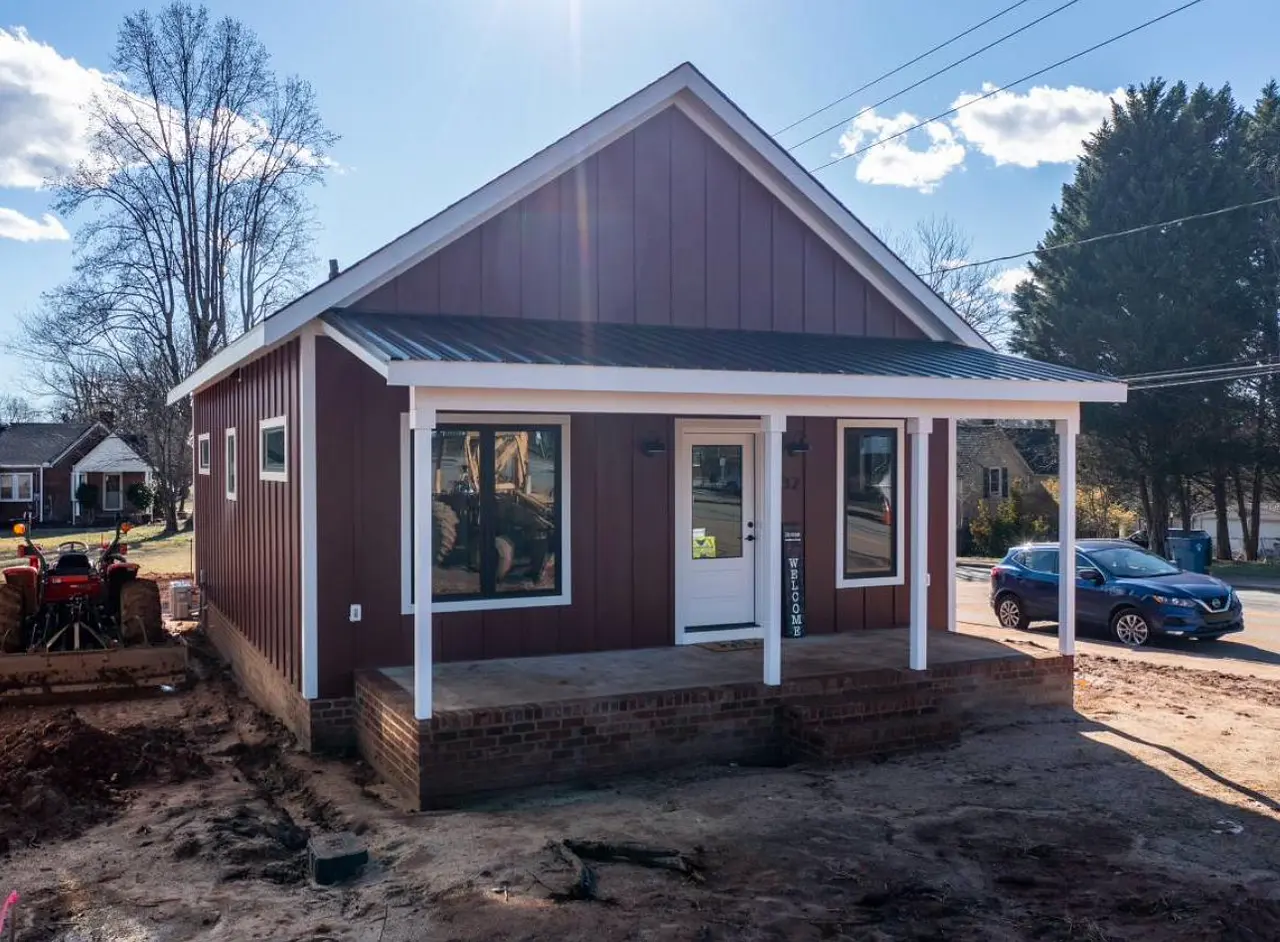
Howard Building Science single-family production home STCBT pilot test: Exterior
The structural insulated panel (SIPs) industry has been providing a superior systems built enclosure for residential and commercial construction over many decades, but has experienced very limited growth in market penetration. It is crucial to transition from early adopters to mainstream consumers, much like with any new innovation aiming to displace an entrenched market solution (like traditional wood framing).
This is due to the huge differences between these two user segments that have vastly different behavioral profiles (see Figure 1). Specifically, mainstream users are much more discrete adapting new ideas, deliberative, resistant to uncertainty, dependent on whole product solutions, and in need of proven solutions. These tendencies work against new innovations that require market strategies to address them. In absence of effective chasm-crossing strategies, the market penetration for new innovations flattens out at a few percent limited to early adopters (dotted line shown in Figure 1).
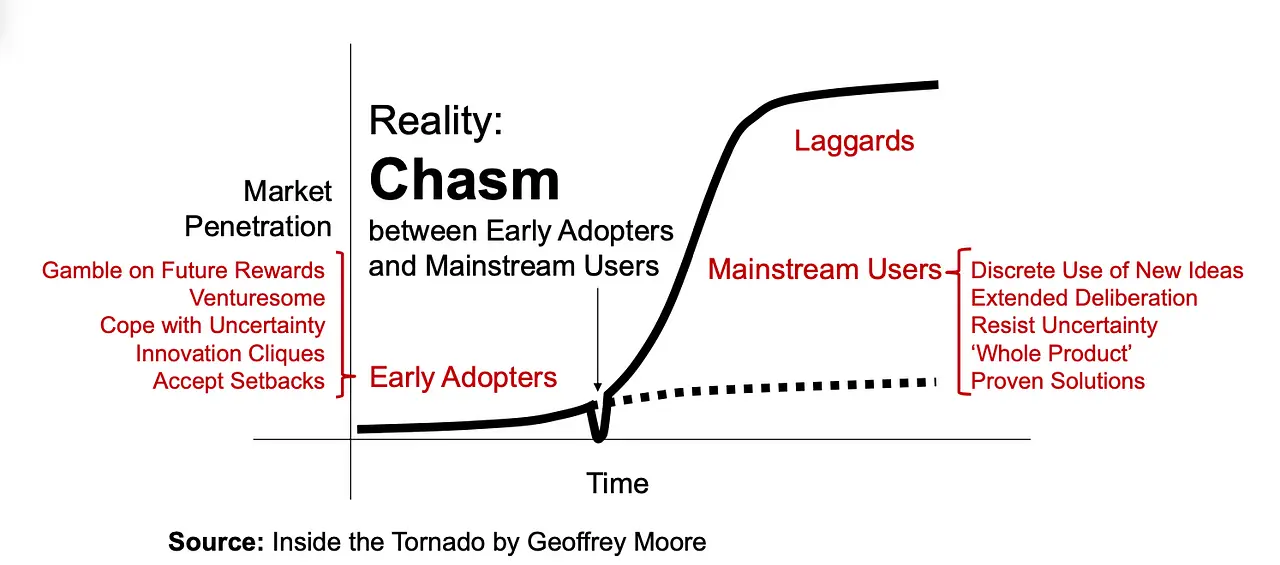
Figure 1: Innovation diffusion curve
In response to challenges reaching mainstream builders and architects, SIPA embarked on development of a bidding tool that would much more effectively translate the value of SIPs advanced enclosure technology that was hidden in the traditional bidding process where a framing package was simply compared to a SIPs package. The goal of this tool is to make it easier and faster to consider a new innovation and minimize uncertainties with a clear contrast of the true cost between 150-year-old framing technology and advanced SIPs.
The process began by set up a working group of SIPs experts from both industry and construction and meeting to to identify the most significant cost savings and added value of SIPs external to the traditional enclosure bid package. The results shown in Table 1 suggest significant opportunities for cost savings and added homeowner value are missing when comparing the cost of a SIPs enclosure to a traditional framing package.
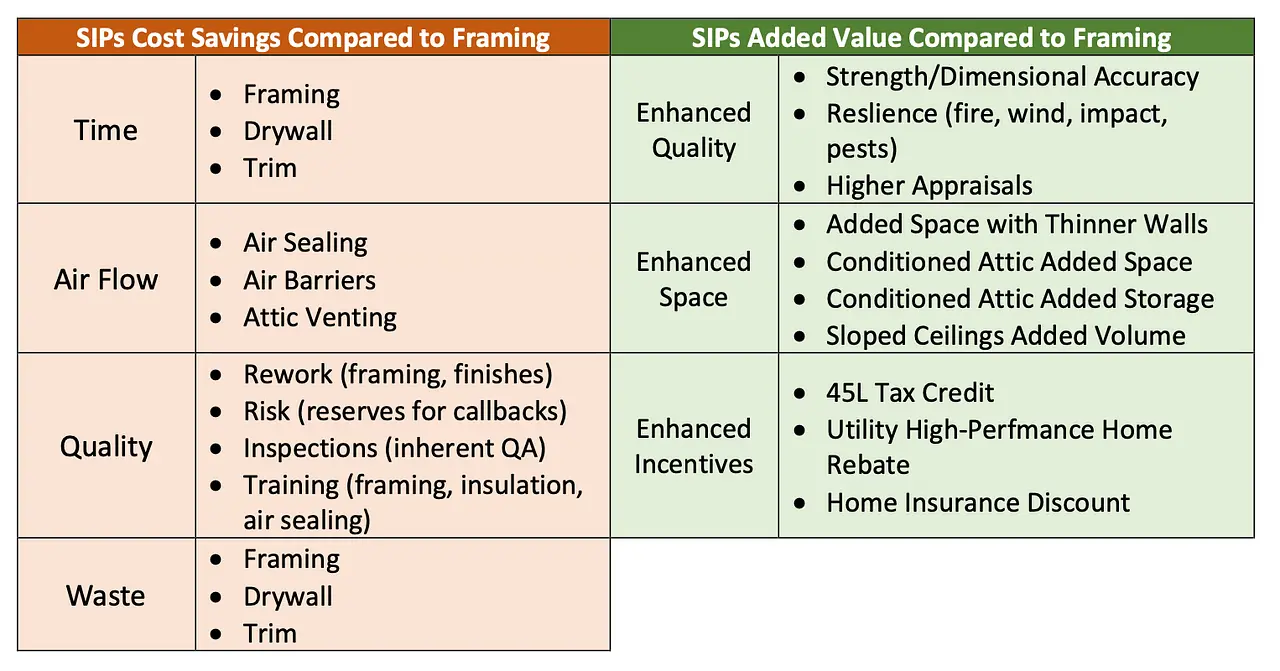
Table 1: SIPs working group results assessing cost savings and added value associated with SIPs
This case study is based on the SIPA True Cost Bidding Tool (STCBT) pilot report developed by Sam Rashkin to apply the tool to a diverse array of real projects to identify its impact on SIP Systems’ competitiveness when using actual bids and expert-based cost estimates.
 The goal of the Howard Building Science project is to showcase SIPs-optimized single-family production homes and help the industry better understand market growth opportunities that align well with climate targets.
The goal of the Howard Building Science project is to showcase SIPs-optimized single-family production homes and help the industry better understand market growth opportunities that align well with climate targets.
Project Overview
This case study focuses on a SIPs-optimized single-family production home by Howard Building Science, a company founded by building science expert Rob Howard. The project is part of a small residential development, Duke St. Cottages, in Granite Falls, North Carolina, which targets workforce housing and features U.S. DOE Zero Energy Ready Home certification.
The retail price for this high-performance home is an impressively low $199,9000 in contrast to the current median home price $363,000 in North Carolina.
This project was designed from the outset for SIPs wall and roof construction, including a simple roof design, leveraging the conditioned space created with the SIPs roof for additional loft storage over half the home and a sloped ceiling for the other half of the home. The home also follows two-foot dimensions to minimize waste.
Project Details
- Location: Granite Falls, North Carolina
- Developer: Howard Building Science
- Project Name: Duke St. Cottages
- House Specifications: Two-bedroom, two-bath home with 1,600 square feet of conditioned space
- Design Features: SIPs wall and roof construction, simple roof design, additional loft storage, and sloped ceilings
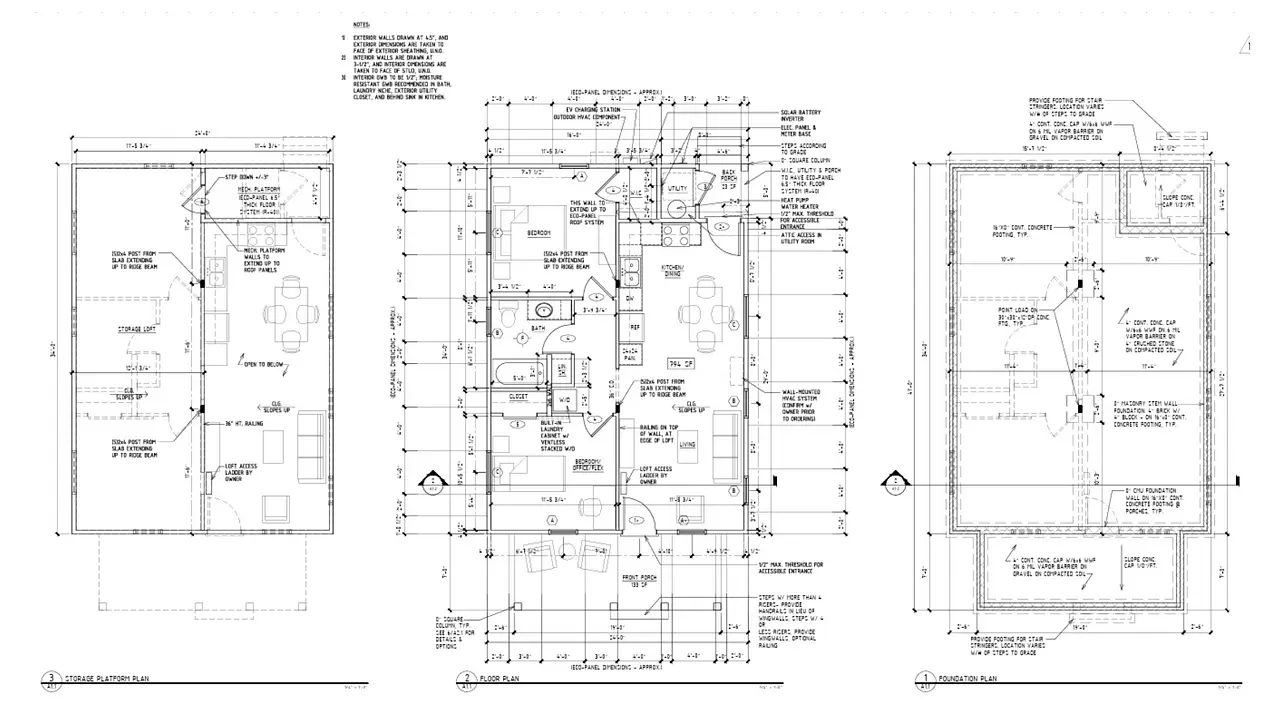
Preview of the Howard Building Science single-family production home STCBT pilot test — floor plans
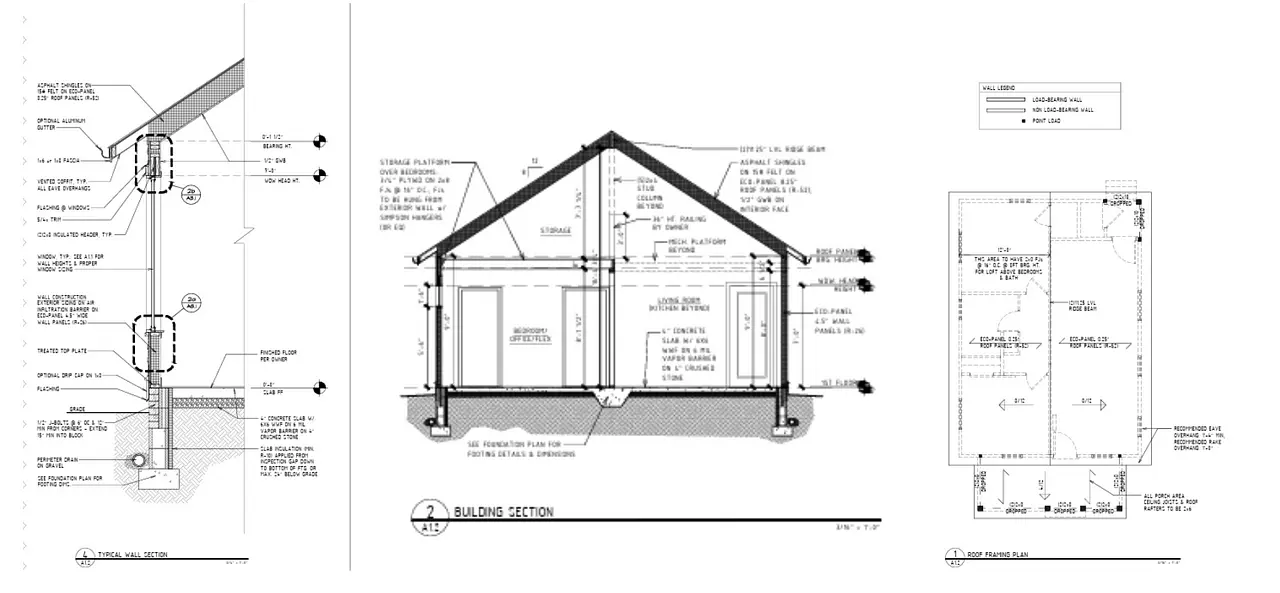
Preview of the Howard Building Science single-family production home STCBT pilot test: sections & roof plan
Sustainability Features
The Howard Building Science project, part of the Duke St. Cottages development, exemplifies sustainable construction practices through the innovative use of Structural Insulated Panels (SIPs). Here’s how the project leverages SIPs for enhanced sustainability:
- Energy Efficiency: From the outset, the home was designed to optimize energy efficiency. SIPs provide superior insulation and air sealing, reducing energy consumption for heating and cooling. This design aligns with U.S. DOE Zero Energy Ready Home certification, ensuring minimal energy use and a smaller carbon footprint.
- Material Efficiency: The home uses two-foot dimensions to minimize waste. This precise approach reduces material usage and enhances the sustainability of the building process. By using SIPs, the project also cuts down on the need for additional framing materials, further reducing environmental impact.
- High Performance: SIPs are utilized to create conditioned loft storage spaces and high ceilings, improving both functionality and aesthetics. The structural integrity and thermal performance of SIPs result in a durable and comfortable living environment. The home’s high-performance features are designed to provide long-term benefits, including lower utility bills and enhanced indoor air quality.
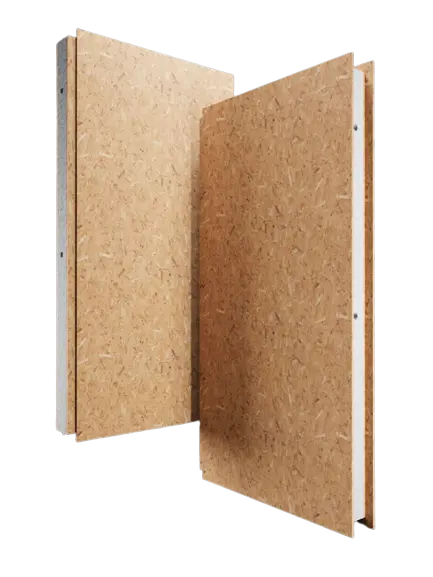
Preflex SIP System on 2050 Materials Platform
These sustainability features showcase the significant environmental and economic advantages of SIPs in residential construction, making them a compelling choice for green development.
Cost Analysis
- Baseline Comparison: Initially, SIPs presented a $14,000 cost premium over conventional framing, translating to 56% higher costs.
- True Cost Comparison: When optimizing the design for SIPs, the analysis revealed a $35,291 net cost and added value advantage for SIPs, making it 65% lower than conventional framing. This demonstrates the significant cost benefits of integrating SIPs into the project design.
Results
The true cost comparison highlights the importance of optimizing designs for SIPs. Key benefits include:
- Cost Savings: Substantial reduction in costs when the design is optimized for SIPs.
- Added Value: Enhanced strength and resilience, improved insulation, air sealing, and additional storage space.
- Environmental Impact: Reduced construction waste and lower energy consumption contribute to the project’s sustainability.
Conclusion
The Howard Building Science pilot project demonstrates the significant sustainability and economic benefits of using SIP Systems in residential construction. By optimizing the design for SIPs, developers can achieve substantial cost savings and added value, making SIPs a compelling choice for sustainable and high-performance home building.
2050 Materials partnered up with Preflex to make their products accessible to all and help designers and architects choose products based on their sustainability performance.
Discover more products by Preflex by visiting 2050 Materials platform.
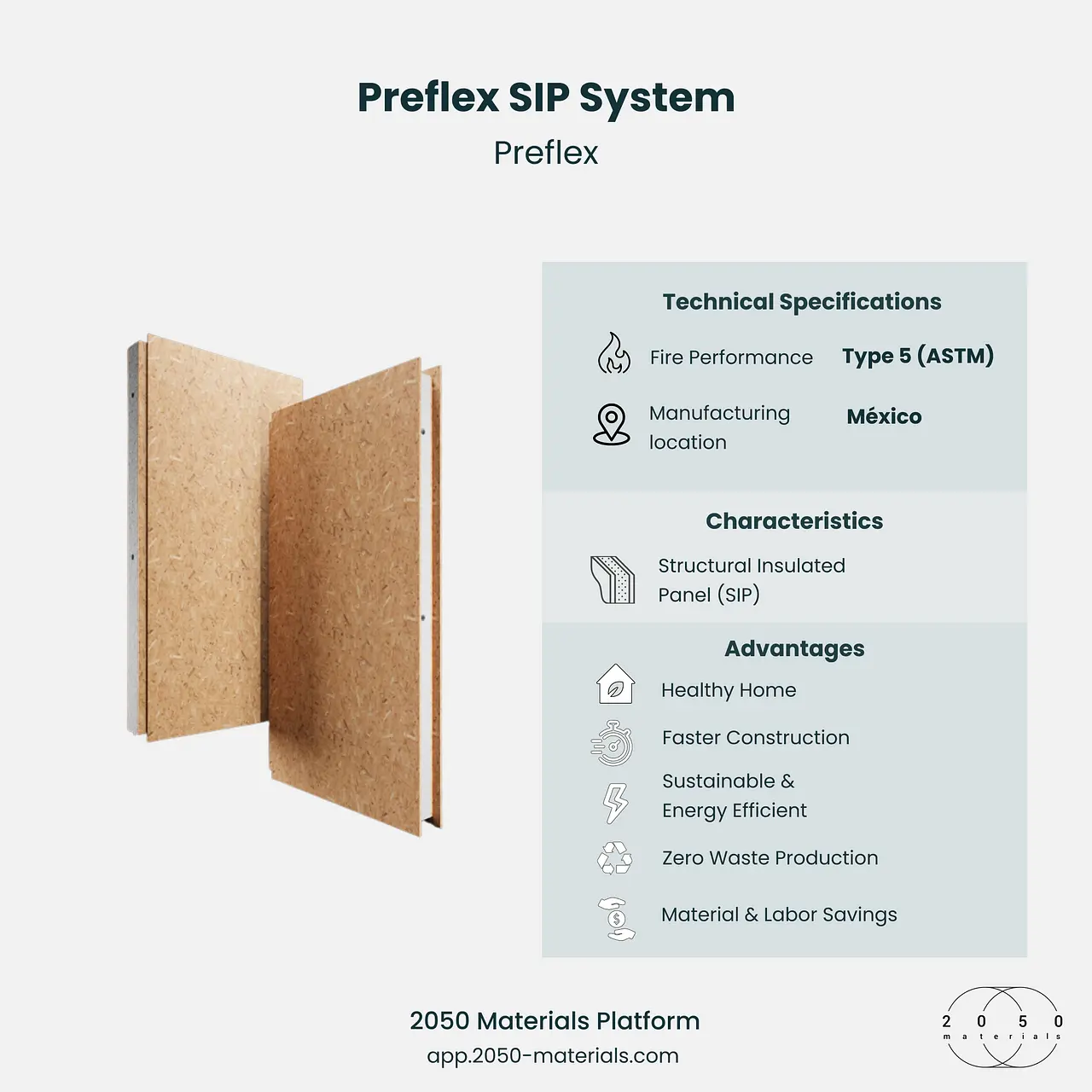
Preflex SIP System on 2050 Materials Platform
Source
SIPA True Cost Bidding Tool (STCBT) Pilot Report by Sam Rashkin
Related articles
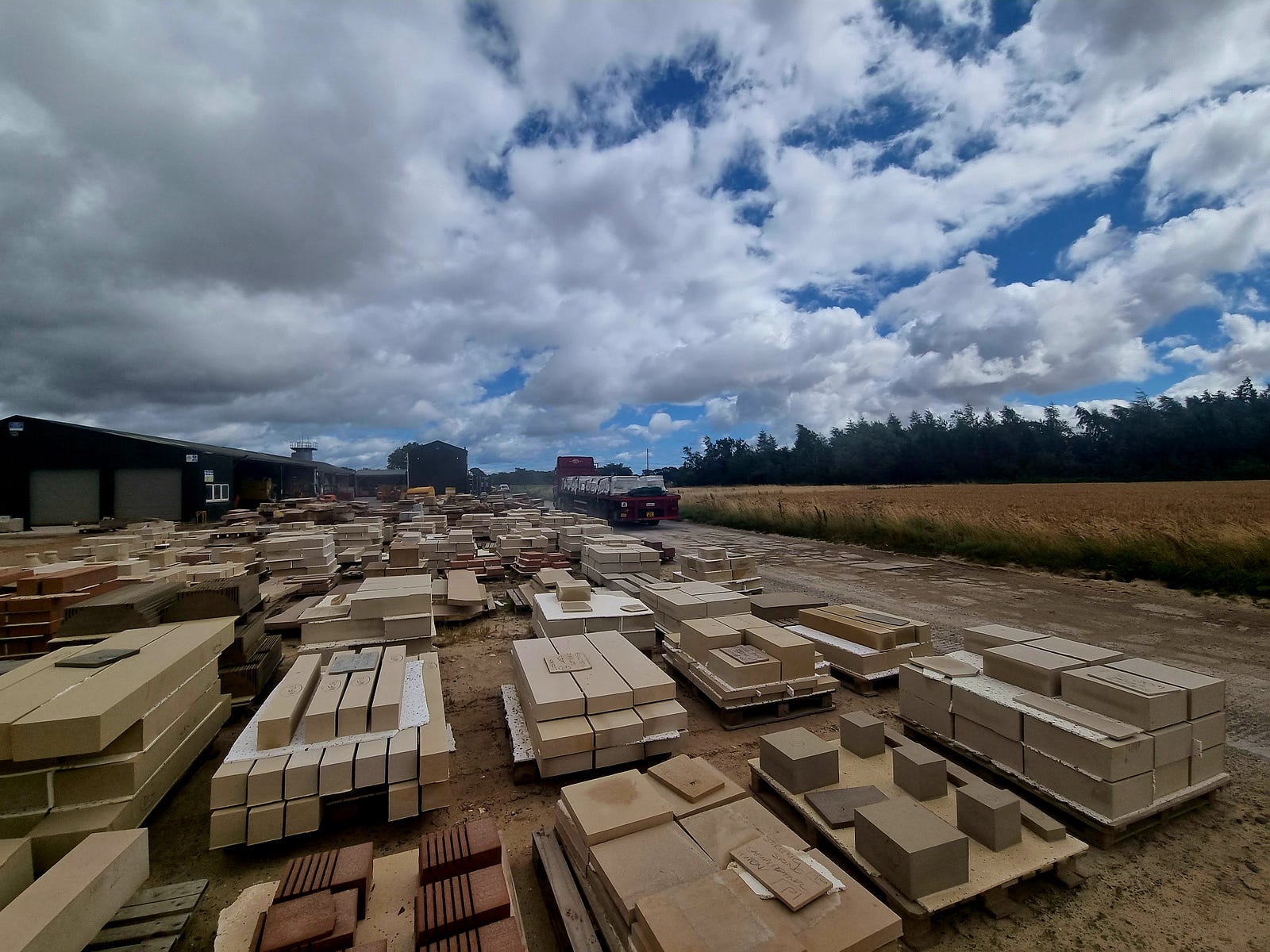
Building a Legacy with Hutton Stone
Hutton Stone, a heritage-driven quarrying company led by Marcus Paine, exemplifies how traditional materials can meet modern sustainability demands. From the careful stewardship of quarries to low-carbon innovations like split and sawn stone bricks, Hutton Stone merges architectural legacy with environmental responsibility. As part of the SME Climate Hub and the UK Ethical Stone Register, their operations demonstrate that ecological care and construction excellence are not mutually exclusive—but mutually reinforcing.
Read more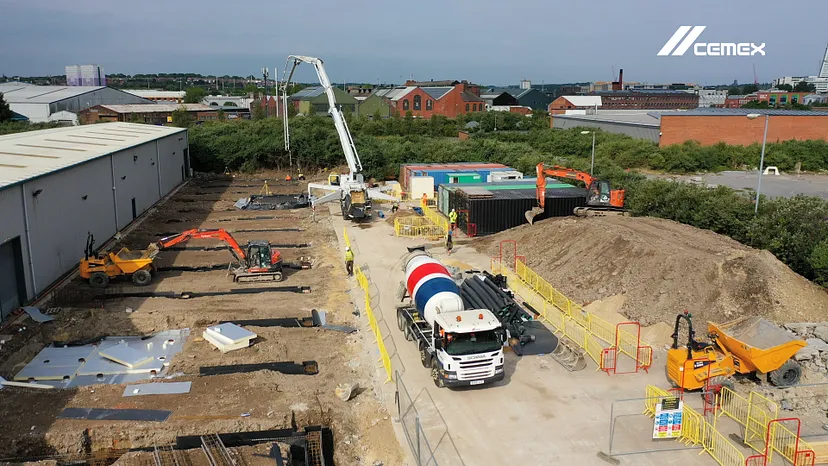
Case Study: Citu Climate Innovation District
As the desire to build lower carbon housing grows, Citu’s Climate Innovation District in Leeds stands as a blueprint for environmentally conscious development.
Read more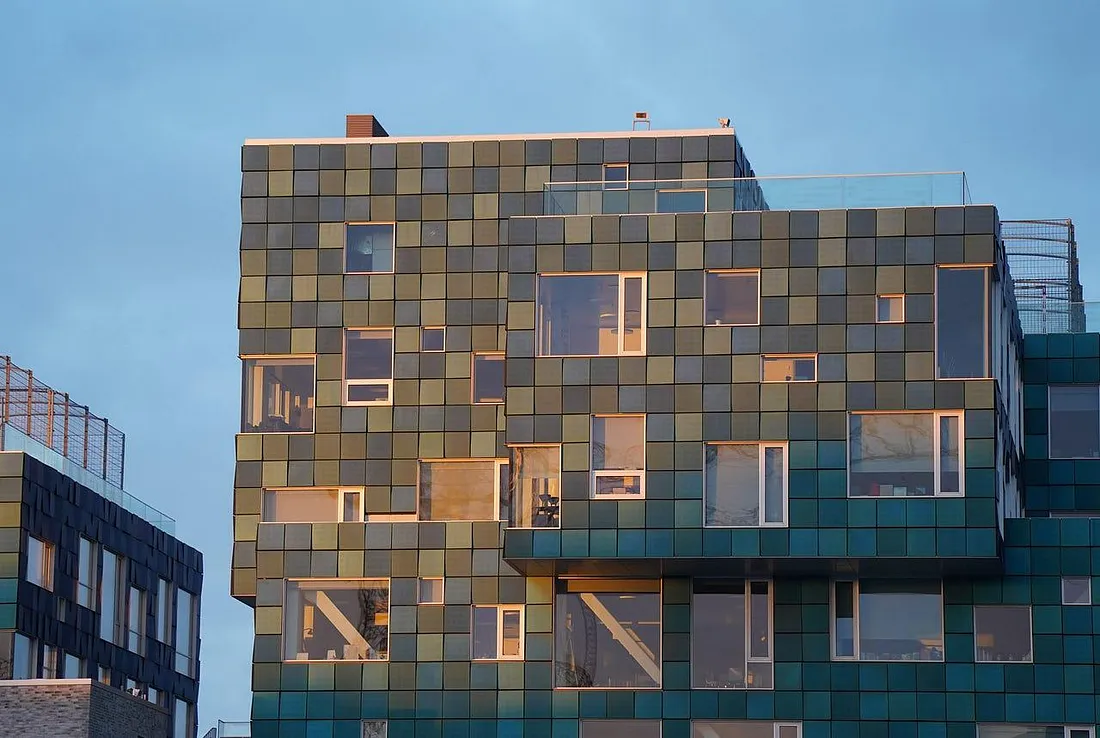
Harnessing Solar Power and Energy Efficiency: SolarLab’s Innovative Facade Solutions
SolarLab is harnessing solar power and energy efficiency providing an innovative solution that not only pays for itself but also generates energy.
Read more